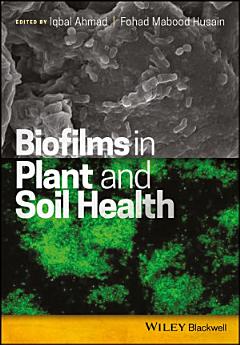Biofilms in Plant and Soil Health
এই ইবুকখনৰ বিষয়ে
Written by leading experts from around the world, Biofilms in Plant and Soil Health provides an up-to-date review on various aspects of microbial biofilms, and suggests future and emerging trends in biofilms in plant and soil health.
Issues are addressed in four sub areas:
I) The fundamentals and significance of biofilm in plant and soil health, and the concept of mono and mixed biofilms by PGPR and fungal biofilms.
II) Biochemical and molecular mechanisms in biofilm studies in plant associated bacteria, and techniques in studying biofilms and their characterization, gene expression and enhanced antimicrobial resistance in biofilms, as well as biotic and biotic factors affecting biofilm in vitro.
III) The ecological significance of soil associated biofilms and stress management and bioremediation of contaminated soils and degraded ecosystems.
IV) Pathogenic biofilm associated with plant and food and its control measures.
This book is recommended for students and researchers working in agricultural and environmental microbiology, biotechnology, soil sciences, soil and plant health and plant protection. Researchers working in the area of quorum sensing, biofilm applications, and understanding microbiome of soil and plants will also find it useful.
লিখকৰ বিষয়ে
About the Editors
Iqbal Ahmad is a Professor in the Department of Agricultural Microbiology, Aligarh Muslim University, Aligarh, India and former visiting Professor, Department of Biology, Umm Al-Qura University, Makkah, Saudia Arabia.
Fohad Mabood Husain is a Post-doctoral Researcher in the Department of Food Science and Nutrition, King Saud University, Saudi Arabia.





